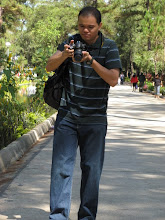Wednesday Liturgy: Follow-up: Exposition of the Precious Blood
ROME, MAY 24, 2011 (Zenit.org).- Answered by Legionary of Christ Father Edward McNamara, professor of liturgy at the Regina Apostolorum university.
With respect to our May 10 article on exposition on Holy Thursday, a reader from Texas commented that although I correctly stated that the bishop should be informed of the abuse, this should be done only after having first taken up the issue with the parish priest himself. I agree with this point, since the error might be the fruit of honest ignorance of the law and might be resolved immediately without recourse to possible disciplinary actions.
Meanwhile, an Irish reader offered some informative observations:
"1. As you are aware, the equating of adoration of the Eucharistic species outside of Mass (especially organized periods of adoration) and exposition of the Blessed Sacrament in the monstrance is becoming more and more the norm. The terminology is being confused repeatedly and this is being shown up in discussions around exposition during the Paschal Triduum.
"2. Exposition of the Blessed Sacrament is permitted in Poland -- by indult of the Holy See -- during the Paschal Triduum. I understand that a semi-transparent veil is used to veil the monstrance from the end of the Holy Thursday Mass and right through to the Easter Vigil. Secondly, on Easter Sunday morning the early Mass remains quite popular in that country -- the night vigil has had great difficulty in becoming popular due to restrictions placed upon people in socialist times (the night vigil becoming obligatory from 1956) -- and the early morning Easter procession outside the church with the Blessed Sacrament is also quite popular. The current Roman Missal for Poland contains the details of the indult and the details of the ceremonies they follow there."
Similar indults may also exist in some other countries, allowing for exceptions to the universal laws. I am grateful to our correspondent for this helpful information which furthers our own and our readers' knowledge of the liturgy.



0 Comments:
Post a Comment
<< Home